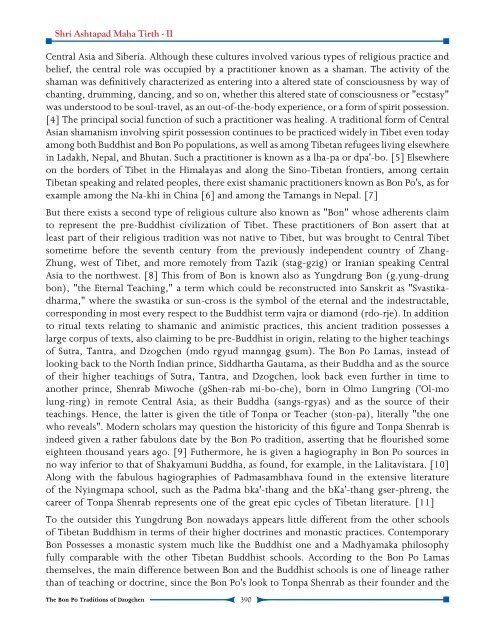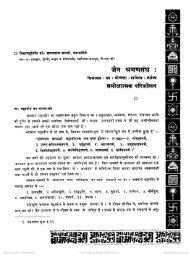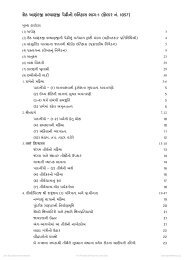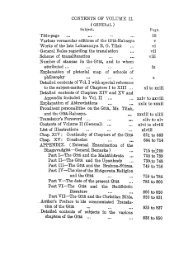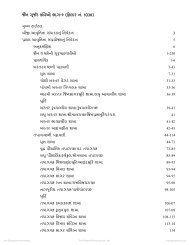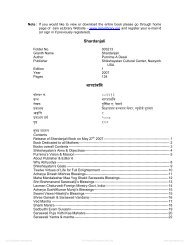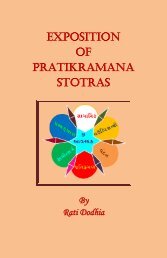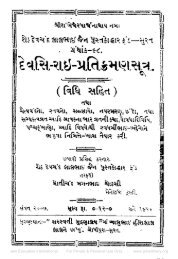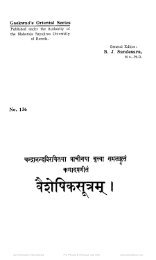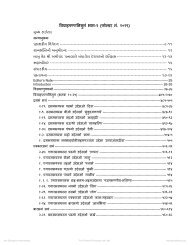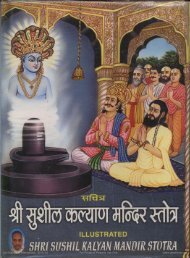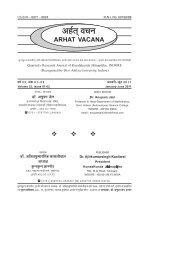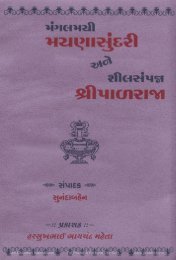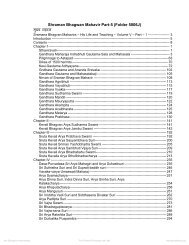Chapter - 08 Bon Po Religion - Jain Library
Chapter - 08 Bon Po Religion - Jain Library
Chapter - 08 Bon Po Religion - Jain Library
You also want an ePaper? Increase the reach of your titles
YUMPU automatically turns print PDFs into web optimized ePapers that Google loves.
Shri Ashtapad Maha Tirth - II<br />
Central Asia and Siberia. Although these cultures involved various types of religious practice and<br />
belief, the central role was occupied by a practitioner known as a shaman. The activity of the<br />
shaman was definitively characterized as entering into a altered state of consciousness by way of<br />
chanting, drumming, dancing, and so on, whether this altered state of consciousness or "ecstasy"<br />
was understood to be soul-travel, as an out-of-the-body experience, or a form of spirit possession.<br />
[4] The principal social function of such a practitioner was healing. A traditional form of Central<br />
Asian shamanism involving spirit possession continues to be practiced widely in Tibet even today<br />
among both Buddhist and <strong>Bon</strong> <strong>Po</strong> populations, as well as among Tibetan refugees living elsewhere<br />
in Ladakh, Nepal, and Bhutan. Such a practitioner is known as a lha-pa or dpa'-bo. [5] Elsewhere<br />
on the borders of Tibet in the Himalayas and along the Sino-Tibetan frontiers, among certain<br />
Tibetan speaking and related peoples, there exist shamanic practitioners known as <strong>Bon</strong> <strong>Po</strong>'s, as for<br />
example among the Na-khi in China [6] and among the Tamangs in Nepal. [7]<br />
But there exists a second type of religious culture also known as "<strong>Bon</strong>" whose adherents claim<br />
to represent the pre-Buddhist civilization of Tibet. These practitioners of <strong>Bon</strong> assert that at<br />
least part of their religious tradition was not native to Tibet, but was brought to Central Tibet<br />
sometime before the seventh century from the previously independent country of Zhang-<br />
Zhung, west of Tibet, and more remotely from Tazik (stag-gzig) or Iranian speaking Central<br />
Asia to the northwest. [8] This from of <strong>Bon</strong> is known also as Yungdrung <strong>Bon</strong> (g.yung-drung<br />
bon), "the Eternal Teaching," a term which could be reconstructed into Sanskrit as "Svastikadharma,"<br />
where the swastika or sun-cross is the symbol of the eternal and the indestructable,<br />
corresponding in most every respect to the Buddhist term vajra or diamond (rdo-rje). In addition<br />
to ritual texts relating to shamanic and animistic practices, this ancient tradition possesses a<br />
large corpus of texts, also claiming to be pre-Buddhist in origin, relating to the higher teachings<br />
of Sutra, Tantra, and Dzogchen (mdo rgyud manngag gsum). The <strong>Bon</strong> <strong>Po</strong> Lamas, instead of<br />
looking back to the North Indian prince, Siddhartha Gautama, as their Buddha and as the source<br />
of their higher teachings of Sutra, Tantra, and Dzogchen, look back even further in time to<br />
another prince, Shenrab Miwoche (gShen-rab mi-bo-che), born in Olmo Lungring ('Ol-mo<br />
lung-ring) in remote Central Asia, as their Buddha (sangs-rgyas) and as the source of their<br />
teachings. Hence, the latter is given the title of Tonpa or Teacher (ston-pa), literally "the one<br />
who reveals". Modern scholars may question the historicity of this figure and Tonpa Shenrab is<br />
indeed given a rather fabulous date by the <strong>Bon</strong> <strong>Po</strong> tradition, asserting that he flourished some<br />
eighteen thousand years ago. [9] Futhermore, he is given a hagiography in <strong>Bon</strong> <strong>Po</strong> sources in<br />
no way inferior to that of Shakyamuni Buddha, as found, for example, in the Lalitavistara. [10]<br />
Along with the fabulous hagiographies of Padmasambhava found in the extensive literature<br />
of the Nyingmapa school, such as the Padma bka'-thang and the bKa'-thang gser-phreng, the<br />
career of Tonpa Shenrab represents one of the great epic cycles of Tibetan literature. [11]<br />
To the outsider this Yungdrung <strong>Bon</strong> nowadays appears little different from the other schools<br />
of Tibetan Buddhism in terms of their higher doctrines and monastic practices. Contemporary<br />
<strong>Bon</strong> <strong>Po</strong>ssesses a monastic system much like the Buddhist one and a Madhyamaka philosophy<br />
fully comparable with the other Tibetan Buddhist schools. According to the <strong>Bon</strong> <strong>Po</strong> Lamas<br />
themselves, the main difference between <strong>Bon</strong> and the Buddhist schools is one of lineage rather<br />
than of teaching or doctrine, since the <strong>Bon</strong> <strong>Po</strong>'s look to Tonpa Shenrab as their founder and the<br />
The <strong>Bon</strong> <strong>Po</strong> Traditions of Dzogchen<br />
390


